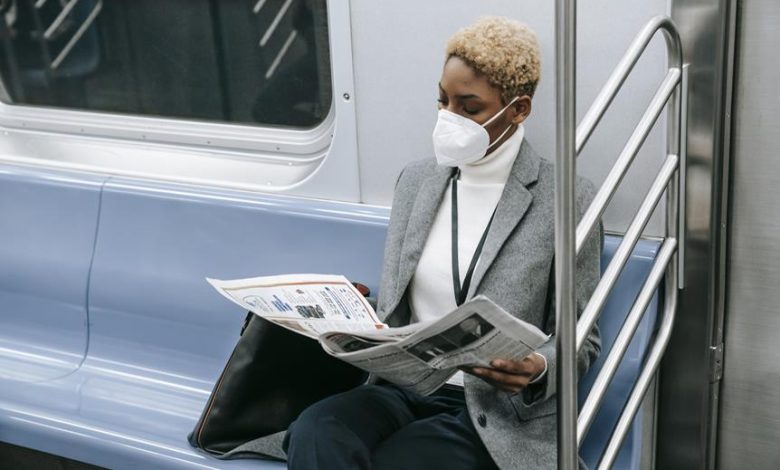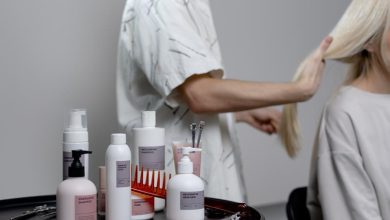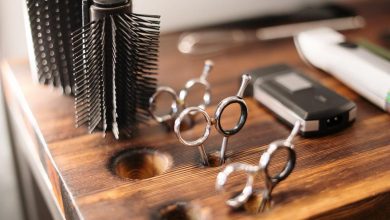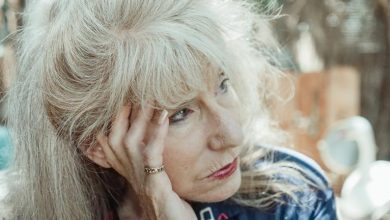Hair Loss After COVID? There's Good News

Did you know that hair loss is a common concern for individuals who have recovered from COVID-19? Fortunately, the majority of COVID-related hair loss is temporary and can be managed with the right guidance and care. In this article, we will explore evidence-based strategies to embrace and handle hair loss after COVID. From hairstyles that boost confidence during the regrowth phase to tips for gentle hair care practices, we will provide you with the tools to navigate your hair loss journey with optimism and confidence.
One of the key factors contributing to COVID-related hair loss is the significant physiological stress experienced by the body during and after the infection. This stress can disrupt the hair growth cycle, leading to excessive shedding or prolonged hair loss. It is important to note that the majority of COVID-related hair loss is temporary and will resolve within 6-9 months. However, there are some tips for promoting hair regrowth during this period. Maintaining a balanced diet rich in vitamins and minerals, such as biotin and iron, can support hair health. Additionally, practicing good hair care habits, such as avoiding excessive heat styling and gently brushing wet hair, can minimize damage and facilitate regrowth. If you are concerned about prolonged hair loss, it is recommended to seek appropriate guidance from a healthcare professional or dermatologist.
Coping With Temporary Hair Loss After COVID
During the period of temporary hair loss after recovering from COVID, it is important to adopt coping strategies to manage the emotional and physical impact. Coping strategies can help individuals navigate the challenges and uncertainties associated with hair loss. One effective coping strategy is seeking emotional support. Connecting with friends, family, or support groups who have experienced similar situations can provide a sense of understanding and empathy. Additionally, speaking with a mental health professional can help individuals process their emotions and develop healthy coping mechanisms. Engaging in self-care activities such as practicing mindfulness, engaging in hobbies, and maintaining a healthy lifestyle can also contribute to overall well-being during this time. Remember, temporary hair loss after COVID is common and can be addressed with the right support and coping strategies.
Embracing Your Hair's Regrowth Phase
Experiment with different hairstyles to embrace the regrowth phase of your hair. Here are some tips for hair regrowth:
- Try out new hairstyles: Use this opportunity to explore different styles that work well with your regrowing hair. Top knots, loose ponytails, and braids can help you feel confident and stylish.
- Play with accessories: Add variety to your look by incorporating different hair accessories such as headbands, clips, or scarves. They can enhance your hairstyle and make it more fun.
- Embrace different textures: During the regrowth phase, your hair may have different textures and patterns. Embrace the opportunity to try out new looks and experiment with different styling techniques.
- Enjoy the versatility: Instead of focusing on the temporary changes, embrace the versatility of your hair during this phase. Embracing your hair's regrowth can be an exciting journey of self-expression.
Hairstyles to Boost Confidence During Hair Regrowth
Explore different hairstyles to elevate your confidence while your hair is regrowing. During the regrowth phase after COVID-related hair loss, trying out new hairstyles can help boost your confidence and embrace your hair as it is. Consider top knots, loose ponytails, or other styles that make you feel comfortable and confident. You can also experiment with different hair accessories to add variety to your look. This is an opportunity to explore different textures and looks, embracing the versatility of your hair during this temporary phase. Additionally, getting a new haircut can enhance your appearance and divert attention from thinning hair. A chunky layered style, for example, can create the illusion of texture and thickness. Consult with a hairdresser who can provide personalized advice based on your specific hair loss situation. Remember, this is a time to embrace change and try fresh and trendy hairstyles that make you feel confident and empowered.
Trying New Hair Accessories for a Fresh Look
To add variety to your look, consider incorporating new hair accessories into your daily style repertoire. Trying different hair accessories can be a fun and easy way to freshen up your appearance and experiment with different looks. Here are some hair accessories that work well for different hair types:
- Headbands: Headbands are versatile and can be worn with both short and long hair. They come in various styles, colors, and materials, allowing you to find the perfect one to match your outfit.
- Hair clips and barrettes: Hair clips and barrettes are great for adding a touch of elegance or a pop of color to your hairstyle. They are suitable for all hair types and can be used to create different styles, such as half-up hairstyles or pinned-back sections.
- Scrunchies: Scrunchies are a trendy and practical hair accessory that works well for all hair types. They come in various sizes, patterns, and fabrics, allowing you to choose the perfect one to complement your outfit.
- Hair combs: Hair combs are ideal for adding a touch of sophistication to your hairstyle. They work well for medium to long hair and can be used to create elegant updos or secure loose waves.
Enhancing Your Appearance With a New Haircut
How can a new haircut help enhance your appearance after experiencing hair loss due to COVID? A new haircut can be a powerful tool in boosting your confidence and enhancing your appearance during the regrowth phase. By exploring trendy styles, you can divert attention from thinning hair and embrace the opportunity to try something fresh and fashionable. One popular option is a chunky layered style, which creates the illusion of texture and thickness. To ensure you choose the right haircut for your specific hair loss situation, it's advisable to consult with a professional hairdresser who can provide personalized advice. Additionally, practicing gentle hair care tips for regrowth, such as avoiding aggressive brushing of wet hair and using conditioner to detangle, can help promote healthy hair and support regrowth. Remember, this temporary phase can be an opportunity to embrace your hair's versatility and experiment with different looks.
Choosing the Right Haircut to Mask Thinning Hair
One effective way to address thinning hair is by selecting a haircut that helps conceal the loss. Here are some haircut options and styling techniques to consider:
- Layers: Opt for a layered haircut to add texture and volume to your hair. Layers can create the illusion of thicker hair and help mask any thinning areas.
- Pixie cut: Consider a short pixie cut if you're comfortable with a shorter style. Pixie cuts can be styled in various ways to add volume and make your hair appear fuller.
- Bob haircut: A bob haircut can be a great option for those with thinning hair. Choose a length that suits your face shape and consider adding layers or angles to create the appearance of more volume.
- Side-swept bangs: Incorporating side-swept bangs into your haircut can help camouflage thinning hair along the hairline. They can also frame your face and draw attention away from any areas of concern.
Remember to consult with a hairstylist who can provide personalized advice based on your specific hair loss situation.
Managing Stress to Prevent Hair Loss Post-COVID
By effectively managing stress levels, individuals can take proactive measures to prevent hair loss post-COVID. Stress is known to contribute to hair loss, and the ongoing COVID-19 pandemic has undoubtedly increased stress levels for many people. To prevent hair loss, it is crucial to prioritize stress management techniques. Regular exercise has been shown to reduce stress and improve overall well-being. Engaging in activities such as yoga, meditation, or deep breathing exercises can also help alleviate stress. Adequate sleep is another essential factor in stress management and overall health. Cognitive behavioral therapy (CBT) can be beneficial in managing stress and anxiety. It is essential to allow the body to recover from COVID by incorporating rest periods and avoiding excessive exercise. By implementing these stress management strategies, individuals can reduce the risk of hair loss post-COVID.
Gentle Hair Care Practices to Promote Hair Regrowth
To promote hair regrowth, it is important to adopt gentle hair care practices and use appropriate products. Caring for post COVID hair requires a thoughtful approach to minimize damage and optimize healthy regrowth. Here are four gentle hair care practices to promote hair regrowth:
- Avoid aggressive brushing of wet hair: Wet hair is fragile, so handle it gently to prevent breakage and damage.
- Use warm water instead of hot water when washing your hair: Hot water can strip the hair of its natural oils, leading to dryness and brittleness.
- Always use conditioner after shampooing: Conditioning helps to moisturize and detangle the hair, making it easier to manage and reducing the risk of breakage.
- Adopt a careful and gentle approach to washing your hair: Avoid excessive rubbing or harsh scrubbing, and instead, use a gentle massaging motion to cleanse the scalp and distribute the product evenly.



